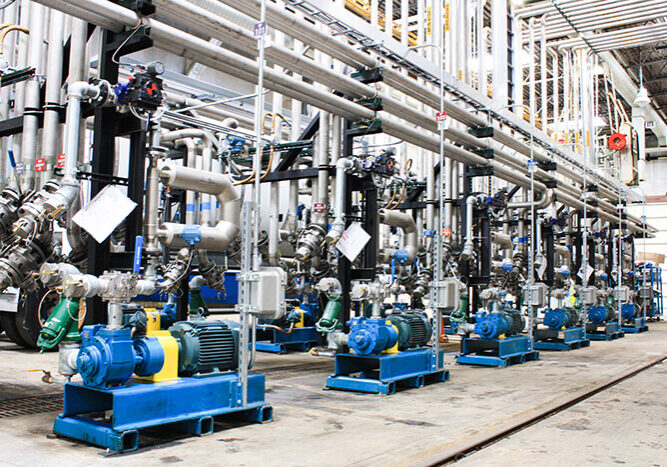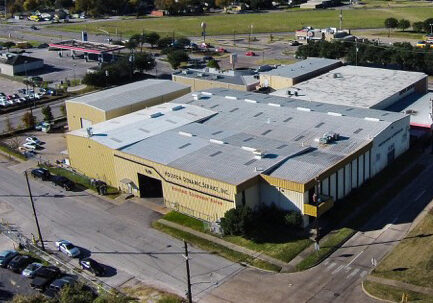The importance of proper alignment in rotating equipment performance
As with all machinery and equipment, the mantra is “Maintenance, maintenance, and more maintenance!” For your equipment to keep running at peak performance, you must keep it properly lubricated and aligned. The importance of proper alignment in your rotating equipment’s performance cannot be stressed enough. When the belts or shafts of your equipment are misaligned, it causes several critical failings that lead to breakdowns and unplanned (and costly) downtime. Poor lubrication leads to 50 percent of rotating equipment failure, the other 50 percent is from misalignment of the machinery. It does not matter whether it is a belt or shaft that is uneven; misalignments cause an assortment of adverse and injurious consequences that result in possible harm to employees, expensive stoppage, and lost revenue.
What causes misalignment? There are three types of misalignment: angular offset misalignment, parallel offset, and combined angular offset. Angular offset occurs when the bisectors of the shafts do not line up laterally. Parallel offset develops when the shafts have no contact between them. Combined angular offset misalignment is the result of the axes of the shafts not meeting nor are parallel. These misalignments all lead to the same deleterious effects: increased friction, increased equipment vibration, an increase in noise while operating, an increase in operating temperature, and excessive overhung loads.
The Problems with Friction
Increased friction is one of the most harmful consequences of misalignment. Friction causes excessive wear on seals, bearings, and couplings. You can see evidence of friction on lubricating seals when you observe powdered lubricant or rubber below the drive coupling or you see lubricant leaking. A lack of lubrication will lead to damage to bearings and couplings because they will abrade and then corrode. Friction also results in shearing as the viscosity of lubricants is diminished to a level where parts make contact causing wear and damage. Increased friction is the basis for the other problems that arise due to misalignment.
Not So Good Vibrations
With an increase in friction comes also an increase in operational vibrations. When your rotating equipment is misaligned, it shakes and vibrates causing the internal parts to rub against each other. Because the parts are rubbing, they also wear quickly and this exacerbates the vibrations. It truly is a continuous cycle until your machinery finally suffers complete operational failure. Vibrations are a safety issue as bolts can shake loose resulting in the instability of the equipment. You will know if your rotating equipment is vibrating too much if you see intermittent or continuous leaks from pipe joints, cracked foundations, and broken foot bolts. Increased operational vibration also causes an increase in operational noise. Since 1981, OSHA has had strict guidelines in place to conserve workers’ hearing in the workplace. Prolonged exposure to hazardous levels of noise can permanently damage your employees’ hearing and set you up for potential fines from OSHA and lawsuits.
Is It Hot in Here?
When operating temperatures exceed recommended levels, you will see evidence of seal failure and lubricant leakage. High temperatures can cause the breakdown of oil film and faster oxidation of lubricants. The temperature-viscosity is quite an important one in rotating equipment. High operating temperatures can cause the oil film to thin too much, letting metal-to-metal contact occur which results in wear, corrosion, and damage. Most rotating equipment experts agree that viscosity is the most important factor in keeping your equipment properly lubricated. Excessive operational temperatures will lead to critical operational failure and costly repairs.
An Unusual Suspect
Excessive overhung load is one the most ignored, misunderstood, and overlooked causes of misalignment in rotating equipment. Overhung load is when force is exerted at a vertical angle to the shaft’s support point. This causes misalignment of the couplings, and thermal expansion and contraction of support housings. Evidence of excessive overhung load is signs of wearing at high stress points such as notched or fretted surfaces, shaft grooves, or in keyways.
The key to keeping your rotating equipment running smoothly and at peak performance is to make sure you adhere to a strict maintenance schedule and have your equipment serviced on a regular basis. Regular maintenance keeps your machinery operating at optimal levels and your workplace safe and reliable. Having said that, all rotating equipment will need some type of repair service over its lifetime; perhaps even a complete rebuild. When that time comes, turn to Houston Dynamic Service for quality service, years f experience, and the optimum solutions to all your rotating equipment repair needs!
Share this post:



